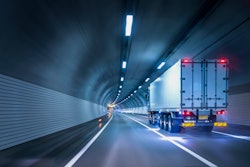
Advances in data processing platforms and capabilities are creating more opportunities for shippers to make greater use of North America’s green and efficient freight rail network. At the same time, supply chain managers are preparing alternative modes of transport for mid to longer hauls because of growing pressures on trucking capacity.
To successfully realize this opportunity, shippers, 3PLs and other participants in the rail ecosystem must continue to develop new strategic relationships that will enable supply chain partners to leverage data and advanced analytics.
The New Value Proposition: Demand-Driven, End-to-End Visibility
Eliminating business silos has been an elusive supply chain goal, but new ways of information sharing make that goal less critical. As progress continues in knocking down those silos, information can be shared across them by tapping into the more granular and accurate information available from the range of devices encompassed by the Internet of Everything (IoE).
It is now embedded in supply chain nodes, including distribution centers, truck cabs, receiving docks, terminals and even as handheld or wearable devices for the workforce.
The North American rail network has been developing and implementing IoE technology in many ways. Both intelligent and passive devices on rolling stock and at wayside locations have added new streams of data and information. This has laid the foundation for a new generation of advanced algorithms and data analysis software that will make it possible for railroads to further enhance safety, reliability and service to customers.
Every supply chain participant now has the potential to gain access to near- or real-time shipment information, as well as to utilize automated intelligence and machine learning for more accurate predictive data. This turbo-charged stream of information empowers managers to make better-informed decisions and adapt to changing circumstances. In some cases, machines already are making those decisions and will only play a more significant role in the future.
End-to-end supply chain visibility has become achievable and realized in some multimodal operations. The significant benefits for transportation users include better delivery time prediction for more efficient plant management and reduced inventory, as well as lower costs due to improved transportation equipment utilization.
Pressures Mount on Motor Carriers, Shippers
These advances come at a time of increased pressure for the motor carrier industry, as the need to increase truck driver productivity has perhaps never been greater.
This has caused a problem for shippers, but it can open new opportunities because rail and multimodal supply chains are becoming a more viable choice, aided by the development of better rail-based shipment information technology and data. To realize the benefits of this information, purely transactional relationships between shippers and rail carriers are enhanced with strategic, long-term relationships that are key to achieving rail’s potential.
While it is possible for some—mostly larger—enterprises to navigate this revolution using internal resources, many others will need to rely on strategic third parties that can make the required continuing investment in time, people and money.
Such relationships develop over longer periods to justify necessary investments in capabilities and innovation that lead to better planning, visibility and demand forecasting.
Improved data and processing capabilities create an important opportunity for shippers that have not made significant—or any—use of freight rail, but could benefit from its greater efficiencies and greener footprint. A 2018 survey of 1,400 global certification professionals by the Chartered Institute of Procurement and Supply found that there is growing pressure to “demonstrate a sustainable supply chain” from customers and other stakeholders. Most of those surveyed believe this pressure will only increase.
According to many industry research sources, freight rail offers significant environmental benefits to shippers by limiting greenhouse gas emissions, increasing fuel efficiency and reducing carbon footprints. Major technology investments in railroad locomotives and the adoption of other green innovations—including zero-emission intermodal rail yard cranes—means that U.S. freight railroads can move one ton of freight an average of 479 miles per gallon of fuel.
By developing strategic relationships with railroads and their 3PLs, shippers can achieve more sustainable operations in addition to cost reductions. But this also means future 3PL, rail, and shipper systems need to be tied together so that benefits are shared across traditional boundaries.
3PLs—Essential Players in the Freight Ecosystem
Leading 3PLs have a long history of developing and implementing advanced data sharing and management systems across motor carriers, ocean carriers, ports and rail carriers.
At the same time, there is an imperative for 3PLs to move away from more traditional transactional relationships both to strengthen their service offerings and because such structures are less profitable.
Railroads report they have already made strong technological advances in the form of equipment tracking, integrated North American shipment track-and-trace and greater efficiency. Plus, network algorithms and computing power now make it possible for railroads to achieve still greater efficiencies. Train operations can be optimized in real-time—incorporating dynamics that include constantly changing crew availabilities, local delays, weather, and the many other factors that can affect planned schedules. As a result, some railroads now reassess train management plans every two minutes permitting almost continuous optimization of cargo flows.
Railinc, for example, brings true aggregated rail network visibility from 570-plus railroads—and more reliable ETAs—to rail shippers that have come to expect nothing less from all their transportation providers.
3PLs recognize that there is an insatiable desire for information. And, they are seeking strategic relationships with rail data partners that will open new opportunities for the development of operations better aligned with evolving consumer and economic forces.
Shippers have an increasingly viable alternative to all-highway transport by utilizing North America’s railroads. Freight rail today provides lower costs and a greener footprint. The industry has developed information technology that can provide visibility and supply chain reliability. By opening the necessary strategic channels and relationships, shippers, savvy 3PLs and railroads will be ready for tomorrow’s supply chain environment. The time to get started is today.

















